Spice is nice! The magic of seasoning

Spice is nice! The magic of seasoning
Ever wonder how you can elevate your everyday dishes into extraordinary culinary experiences? The answer might be tucked away in your pantry or spice rack. With just a pinch of this and a dash of that, you can transform the flavor of your favorite foods, while also reducing your reliance on salt, sugar, and fat. Moreover, the right selection of spices can enhance the nutritional value of your meals, helping to balance blood sugar levels, improve cardiovascular health and make skin radiant.
Recent studies have even shown that incorporating herbs and spices into healthier versions of traditionally high-fat, high-sugar dishes can make them more appealing than their traditional counterparts. It’s a fascinating revelation.
Quickie kitchen lesson: While both herbs and spices are plant-based, there’s a distinction between the two. “Herbs” refer to the fresh components of non-woody plants, whereas “spices” are typically derived from dried plant parts like roots, stalks, bark, rhizomes, seeds, leaves, flowers, or fruit.
In this article, we’ll explore the magic of spices (for the wonders of herbs, click here). Read on to get the details, learn how to experiment in your kitchen, and embark on a flavorful journey that will elevate your cooking to new heights of deliciousness!
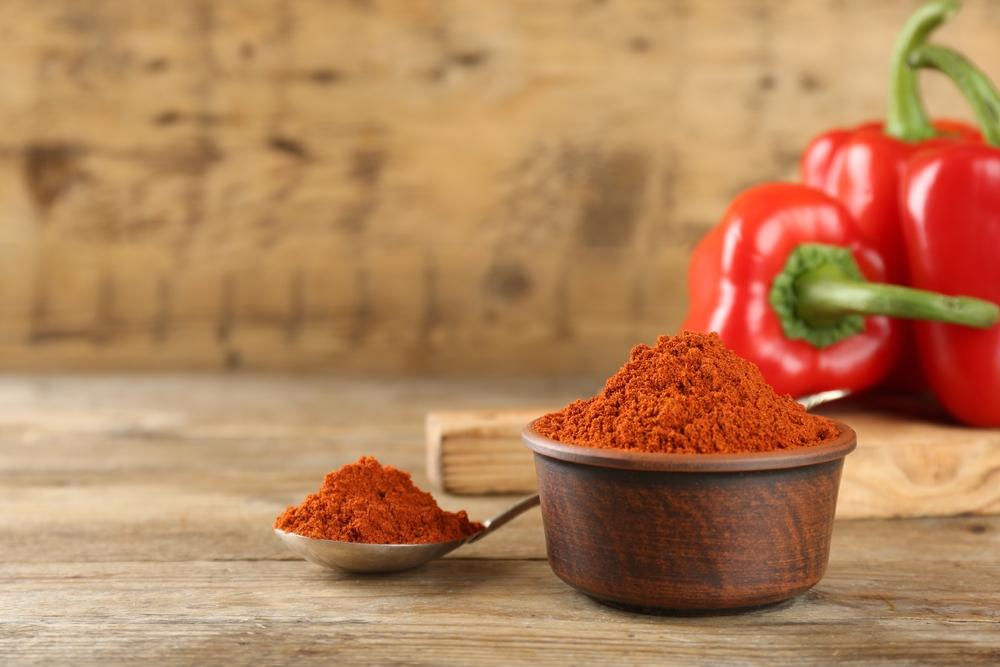
Spice is nice: Paprika
Paprika
Paprika, a radiant red spice, owes its color to sweet (bell) peppers that are dried and ground into a fine powder. The ripeness of the peppers and their natural sugar content contribute to the delightful sweetness of paprika. In some cases, especially with Spanish paprika, peppers are dried using wood-smoking techniques, imparting a warm, smoky flavor.
Paprika’s spiciness can vary, from mild to very hot, so carefully check the label when purchasing to determine its specific flavor profile. Smokey paprika, in particular, stands out as one of my most favorite spices.
Commonly used in Hungarian and Spanish cuisine, paprika can also be found in Cajun seasonings and spice mixes like Baharat. Rich in vitamin C, paprika not only enhances flavor but also supports healthy skin by aiding collagen production and bolsters our immune system.
Discover the magic of paprika in my recipes, such as Hummus Dressing and Buffalo Tofu.

Spice is nice: Chili powder
Chili Powder
Chili powder, a blend of various spices, including ground dried chili peppers, cayenne pepper, paprika, garlic powder, and cumin, has a rich history of enhancing dishes. While its exact origin in the American Southwest remains debated, chili powder has become a staple in Mexican and Tex-Mex cuisines. Studies have shown that compounds found in chili peppers possess anti-inflammatory properties, adding to its appeal.
When shopping for chili powder, careful label reading can unveil its unique flavor profile. Inclusion of cayenne pepper implies spiciness, while paprika adds sweet or smoky notes. Watch out for added salt if you’re monitoring sodium intake. Chili powder typically retains its freshness for two to four years.
Make your taste buds dance with chili powder in recipes like Butternut Squash Chicken Chili and LaCroix Coconut Lime Cooler.
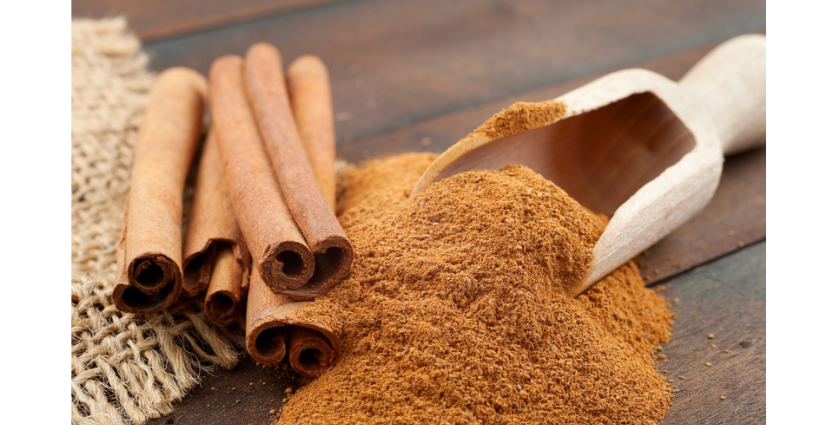
Spice is nice: Cinnamon
Cinnamon
Cinnamon, with its sweet and mildly spicy woodsy flavor, is crafted from the dried bark of the Cinnamomum tree. Though originating in Asia, this sought-after spice is now celebrated worldwide. Commercially, cinnamon is available as sticks or ground powder. Ground cinnamon is ideal for baking, while cinnamon sticks can infuse flavor into drinks or soups, or be grated into a fine powder for various culinary applications.
Cinnamon sticks and ground cinnamon both boast a shelf life of up to four years. You may encounter different varieties, such as Indonesian, Vietnamese, and Ceylon cinnamon, each offering unique flavor profiles. Indonesian cinnamon, rich in fibers, enhances dish texture, while Vietnamese cinnamon is highly esteemed in the United States, and Ceylon cinnamon imparts a clove-like taste.
Beyond its delicious flavor, cinnamon may positively impact blood sugar and cholesterol levels.
Explore the enchanting world of cinnamon in my recipes like Apple Fritters and Cheesecake Brownie Bites, or savor a Spiced and Sparkling Chilled Chai Tea with cinnamon sticks.
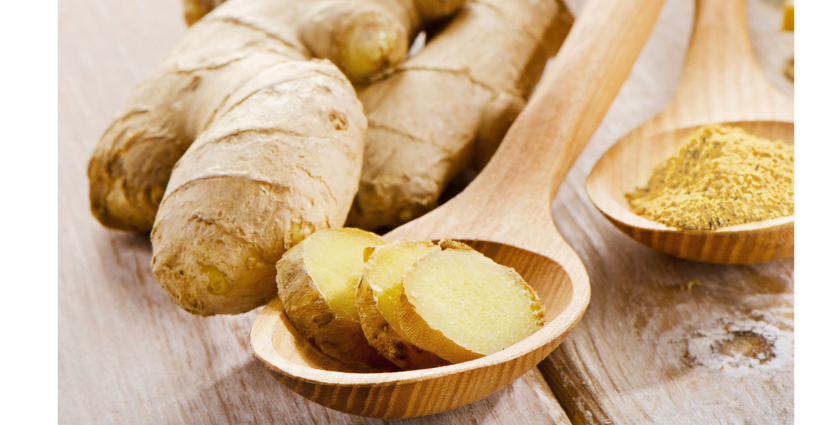
Spice is nice: Ginger
Ginger
Ginger, originating in Asia, has a long history of use in both culinary and medicinal applications. Available in various forms, including fresh, dried and ground, pickled, and crystallized, ginger offers a complex flavor profile with notes of bitterness and citrus.
When selecting ginger, consider your culinary intentions. Ground ginger is ideal for baking, while candied or crystallized ginger serves as a delightful garnish. Fresh ginger complements seafood dishes and marinades, though it has a shorter shelf life of up to three weeks, extendable by freezing.
Ginger has been lauded for its anti-inflammatory and anti-nausea effects, making it a popular choice for alleviating tummy troubles and other health benefits, although more research is needed.
Embrace the bold flavor of ginger in recipes like Air-Fryer Miso Tofu, Carrot Ginger Dressing, and Pineapple Moscow Mule Mocktail.
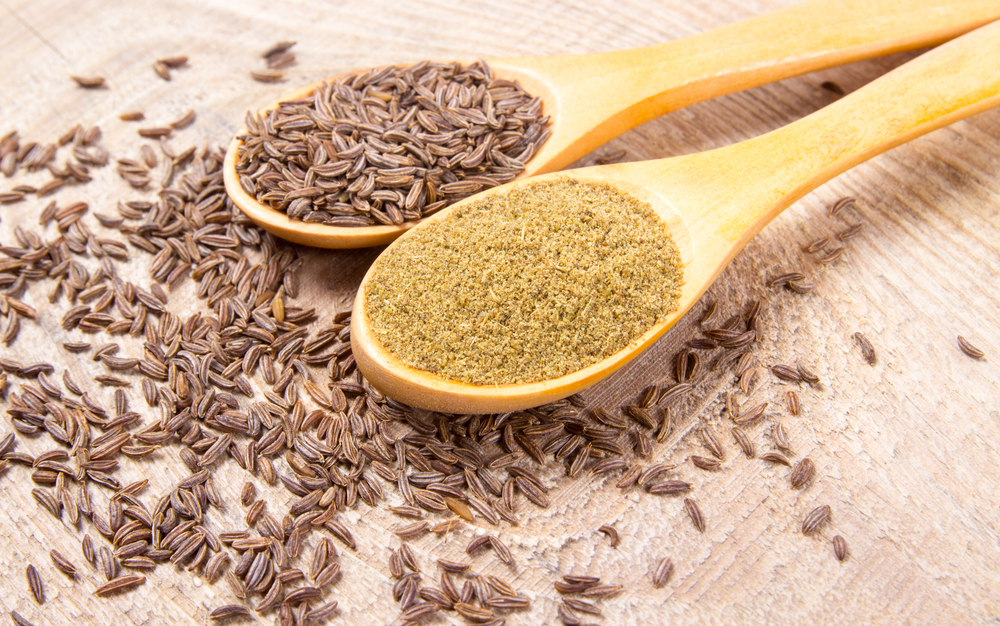
Spice is nice: Cumin
Cumin
Cumin, derived from the dried seeds of Cuminum cyminum, a relative of parsley, offers a rich, warm, earthy flavor similar to caraway seeds. Whether using whole seeds or ground into a fine powder, cumin is a versatile spice with a shelf life of up to four years.
Popular in North African, Indian, Middle Eastern, and Mexican cuisines, cumin adds depth and crunch to dishes when toasted and fried. Ground cumin saves time and is an essential component of rubs and spice blends, making it a versatile addition to your kitchen. What’s more, studies suggest that cumin is a source of beneficial antioxidants.
Indulge in the enticing flavors of cumin in dishes like these Better-for-You Loaded Nachos.
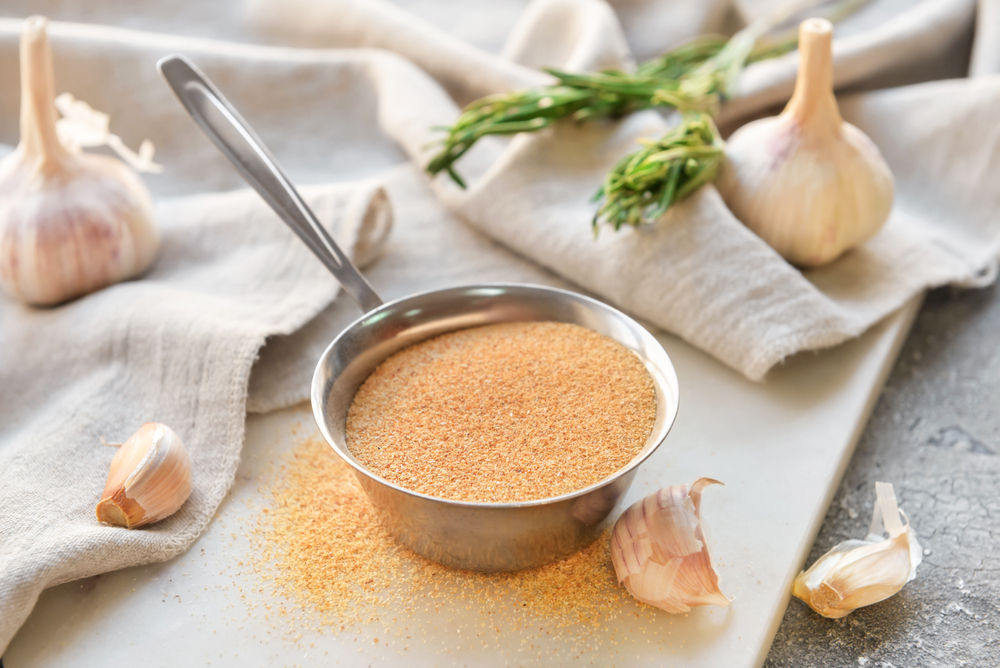
Spice is nice: Garlic powder
Garlic Powder
Garlic powder, crafted from dried and ground fresh garlic cloves, is renowned for its warm and pungent flavor, enriching a wide range of savory dishes. Despite the infamous “garlic breath,” this beloved seasoning enjoys global popularity due to its delicious taste and ease of use.
Garlic powder boasts a shelf life of up to four years. When shopping for it, be cautious not to confuse it with garlic salt or granulated garlic. Garlic salt blends garlic powder with salt, while granulated garlic has a coarser texture than garlic powder.
Garlic touts many heart health benefits, including potential cholesterol and blood pressure reduction, though ongoing research continues to uncover its full potential.
Experience the essence of garlic powder in recipes like Buffalo Veggies and Slim-Style Mashed Potatoes.
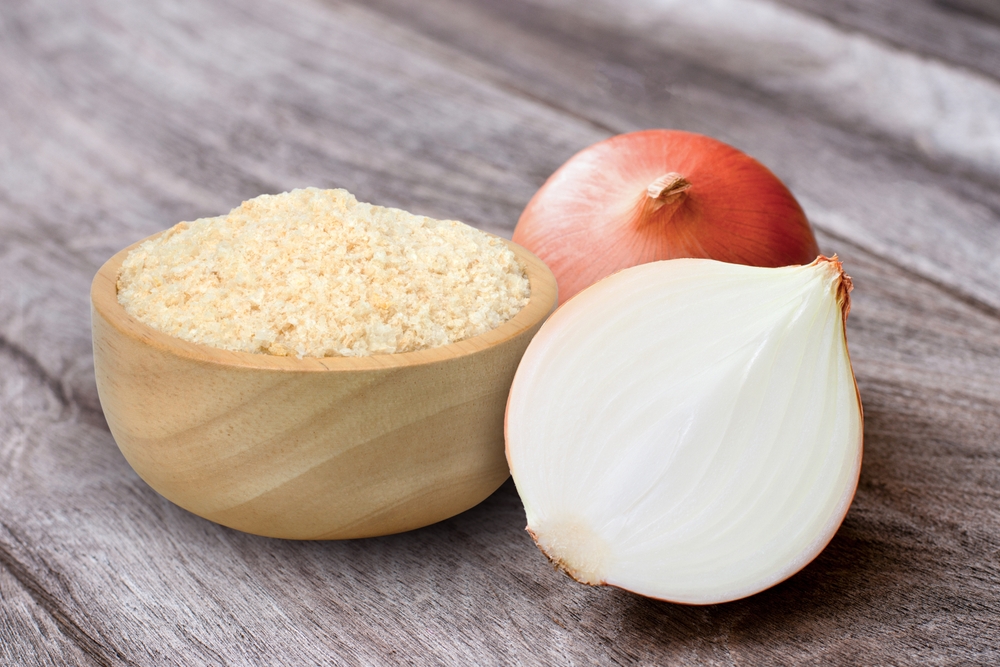
Spice is nice: Onion powder
Onion Powder
Onion powder, a dehydrated and powdered form of common onions, provides a pungent kick that elevates the flavor of any dish. More potent than sliced onions, it lacks their natural sweetness, offering a richer and more savory profile to recipes. One tablespoon of onion powder can often be substituted for one medium onion in your cooking endeavors.
Various dehydrated onion products may also be found on store shelves, including granulated onion with a coarser grind and onion powders that include salt. Generally, a jar of onion powder should maintain its flavor for about two years, sparing you the tears associated with chopping fresh onions.
What’s more, onion powder contains quercetin, an antioxidant that may confer protection against cancer and heart disease.
Savor the rich flavors of onion powder in my Ranch Dressing.
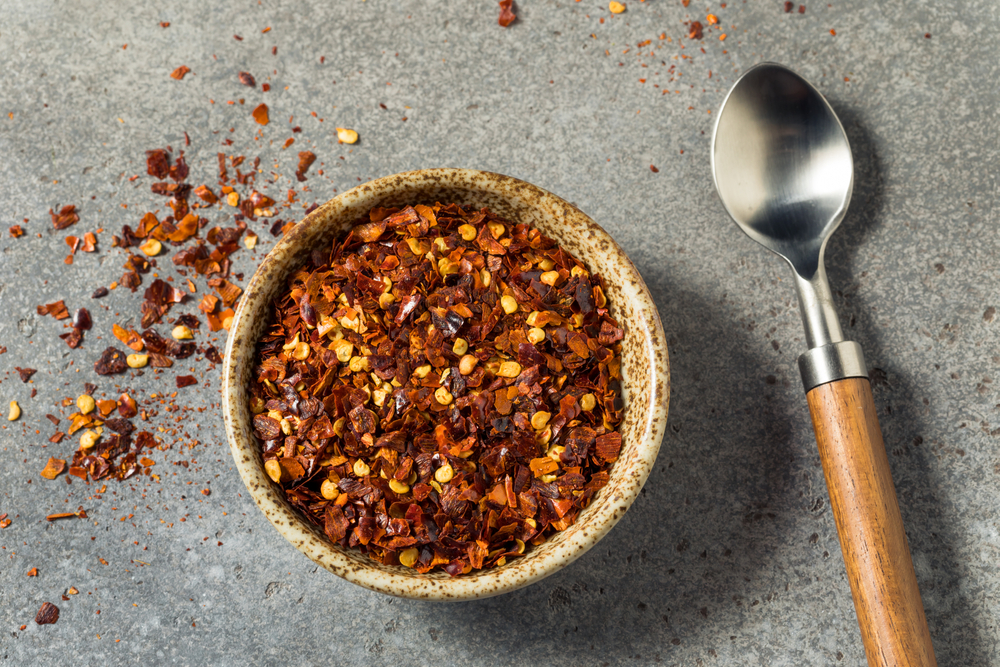
Spice is nice: Red pepper flakes
Red Pepper Flakes
Red pepper flakes, also known as crushed red pepper, are a fiery concoction made from various red peppers, including cayenne, bell peppers, jalapeños, and more. While the exact pepper ratio may differ among brands, cayenne pepper typically dominates, making these flakes undeniably spicy.
Capsaicin, the compound responsible for the heat in peppers, offers anti-inflammatory properties. Some research even suggests that red pepper flakes may be linked to a reduced risk of death from cardiovascular disease or cancer.
Ready to add some heat? Try red pepper flakes in my fiery Hot Honey recipe.
Thanks to Alison Garbarini for her contributions to this article.
For smart tips and tricks to use at the farmers market, click here.

